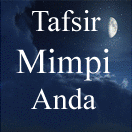Ophiolites are a distinctive association of allochthonous
rocks interpreted to form in a variety of plate tectonic settings
such as oceanic spreading centers, back arc basins, forearcs,
arcs, and other extensional magmatic settings including
those in association with plumes. A complete ophiolite grades
downward from pelagic sediments into a mafic volcanic complex
that is generally made of mostly pillow basalts, underlain
by a sheeted dike complex. These are underlain by
gabbros exhibiting cumulus textures, then tectonized peridotite,
resting above a thrust fault that marks the contact
with underlying rock sequences. The term ophiolite refers to
this distinctive rock association and should not be used in a
purely generic way to refer to allochthonous oceanic lithosphere
rocks formed at mid-ocean ridges.
Very few complete Phanerozoic-like ophiolite sequences
have been recognized in Archean greenstone belts. However,
the original definition of ophiolites includes “dismembered,”
“partial,” and “metamorphosed” varieties, and many
Archean greenstone belts contain two or more parts of the
full ophiolite sequence. Archean oceanic crust was possibly
thicker than Proterozoic and Phanerozoic counterparts,
resulting in accretion predominantly of the upper section
(basaltic) of oceanic crust. The crustal thickness of Archean
oceanic crust may in fact have resembled modern oceanic
plateaux. If this were the case, complete Phanerozoic-like
MORB (Mid-Ocean Ridge Basalt)-type ophiolite sequences
would have been very unlikely to be accreted or obducted
during Archean orogenies. In contrast, only the upper, pillow
lava-dominated sections would likely be accreted.
Portions of several Archean greenstone belts have been
interpreted to contain dismembered or partial ophiolites.
Accretion of MORB-type ophiolites has been proposed as a
mechanism of continental growth in a number of Archean,
Proterozoic, and Phanerozoic orogens. Several suspected
Archean ophiolites have been particularly well-documented.
One of the most disputed is the circa 3.5 Ga Jamestown ophiolite
in the Barberton greenstone belt of the Kaapvaal craton
of southern Africa—a 1.8-mile (3-km) thick sequence including
a basal peridotite tectonite unit with chemical and textural
affinities to Alpine-type peridotites, overlain by an intrusiveextrusive
igneous sequence, and capped by a chert-shale
sequence. This partial ophiolite is pervasively hydrothermally
altered and shows chemical evidence for interaction with seawater
with high heat and fluid fluxes. SiO2 and MgO alteration
and black smoker-like mineralization is common, with
some hydrothermal vents traceable into banded iron formations,
and subaerial mudpool structures. These features led
Maarten de Wit and others in 1992 to suggest that this ophiolite
formed in a shallow sea and was locally subaerial, analogous
to the Reykjanges ridge of Iceland. In this sense, Archean
oceanic lithosphere may have looked very much like younger
oceanic plateaux lithosphere.
Several partial or dismembered ophiolites have been
described from the Slave Province of northern Canada. A
fault-bounded sequence on Point Lake grades downward
from shales and chemical sediments (umbers) into several
kilometers of pillow lavas intruded by dikes and sills, locally
into multiple dike/sill complexes, then into isotropic and
cumulate-textured layered gabbro. The base of this partial
Archean ophiolite is marked by a one-kilometer thick shear
zone composed predominantly of mafic and ultramafic
mylonites, with less-deformed domains including dunite,
websterite, wherlite, serpentinite, and anorthosite. Synorogenic
conglomerates and sandstones were deposited in several
small foredeep basins and are interbedded with mugearitic
lavas (and associated dikes), all deposited/intruded in a foreland
basin setting.
A complete but dismembered and metamorphosed 2.5-
billion-year-old ophiolite complex has been described from
the North China craton. This ophiolite has structurally complex
pillow lavas, mafic flows, breccia, and chert overlying a
mixed dike and gabbro section that grades down into layered
gabbro, cumulate ultramafics, and mantle peridotites.
High-temperature mantle fabrics and ophiolitic mantle podiform
chromitites have also been documented from the Dongwanzi
ophiolite, and it has ophiolitic mélange intruded by
arc magmas.
Dismembered ophiolites appear to be a widespread component
of greenstone belts in Archean cratons, and many of
these apparently formed as the upper parts of Archean oceanic
crust. Most of these are interpreted to have been accreted
within forearc and intra-arc tectonic settings. The observation
that Archean greenstone belts have such an abundance
of accreted ophiolitic fragments compared with Phanerozoic
orogens suggests that thick, relatively buoyant, young
Archean oceanic lithosphere may have had a rheological
structure favoring delamination of the uppermost parts during
subduction and collisional events.

















Tidak ada komentar:
Posting Komentar
Catatan: Hanya anggota dari blog ini yang dapat mengirim komentar.